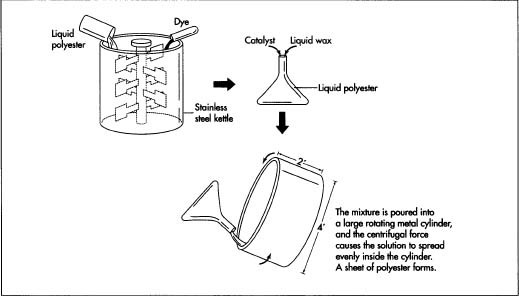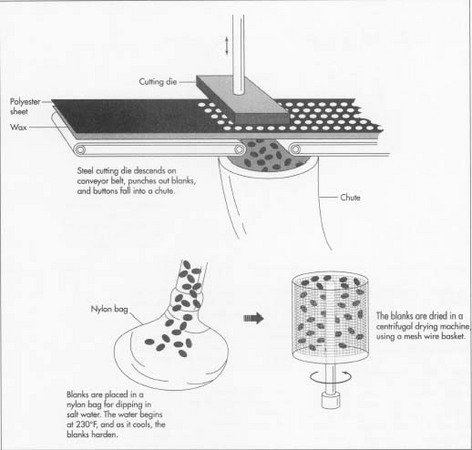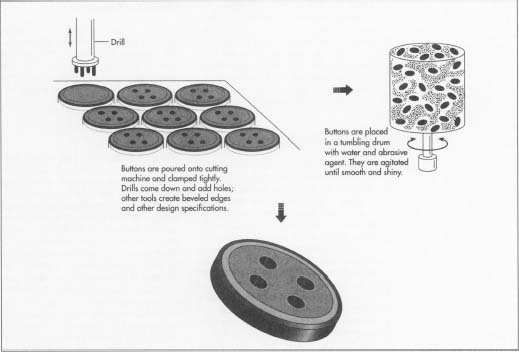Introduction
Since prehistoric times, people have used buttons made from different materials. Nevertheless, the millennia of change in the fashion and manufacturing industries have seen the development of new buttons to fit the emerging fashion designs.
For centuries now, buttons have portrayed resilience as ordinary fabric fasteners. During prehistoric times, buttons did not have holes. The beginning of the 13th century marked a new era in the fashion industry as manufacturers started developing buttonholes within buttons. History notes that Europe became the first continent to manufacture holed-buttons courtesy of the technology brought by knights who had gone to the Middle East for war. Consequently, the introduction of buttonholes led to a new surge in the utilization of buttons.
During the era of the Renaissance in Europe, buttons dominated men’s fashion largely. For instance, fashion manufacturers invented jackets with rows of buttons starting from the chin all the way to the waist.
On the other hand, these fashion designers invented sleeves fastened compactly with buttons right from the elbow to the wrist. As if this is not enough, fashion designers came up with trousers fastened by buttons at the thigh, waist, or at the laps. The earliest buttons emanated from France in the 13th century. Nevertheless, the league of button manufacturers made buttons from different raw materials such as wood, gold, and silver. Other buttons used in the the13th century included those made from pewter, bone and mineral elements such as brass (Lake, 2010, p.1).
Historical Background of Buttons
We have seen that the first patch of buttons came into the fashion market in the 13th century. However, this did not stop manufacturers from inventing new buttons of course from different raw materials. Five centuries down the line, the button industry burgeoned across all Europe. Artisans from everywhere in Europe came up with new techniques of manufacturing buttons. For instance, in France, a league of buttonmakers brought vigor and vitality to the growing fashion design industry by manufacturing convoluted buttons from precious metals and jewels. Additionally, they also manufactured fabric buttons mainly for embroidered textile materials.
In Britain, buttonmakers concocted new buttons using raw materials such as steel and glass or a mixture of glass and metal. Other artists from different countries also had their own technique of manufacturing buttons using different raw materials. Nevertheless, many of the manufactured buttons emanated from France and dominated Europe. For example, an artist by the name of Antoine Watteau manufactured different types of buttons later loved by many fashion designers and consumers (Meredith & Gillian, 2000, pp. 9-19).
Early 19th century, many buttonmakers had managed to establish factories, and now they manufactured buttons in their plants. In a move aimed to control the manufacturing of buttons, many manufacturers opted not to produce metal buttons. Moreover, if someone was a die-maker, he or she could not leave England for fear that he or she might unleash the trade sestets overseas. Nonetheless, these two strategies did not prevent the spread of technology of manufacturing buttons to other countries. Soon, other countries started producing buttons from raw materials such as glass and metals. The mass production of buttons became unprecedented thus, igniting the fashion industry.
Every manufacturing company opted to produce excellent buttons to maximize its investment returns. Eventually, extravagant buttons dominated the market. For instance, die-makers manufactured multifarious buttons by borrowing heavily from novel and play scenes. They went as far as using Wagner operas in addition to operettas of Sullivan to produce buttons that exhibited exquisiteness and desirability. For quite a long time, these buttons dominated the fashion industry and many fashion designers developed garments that spotted buttons in certain segments (Meredith& Gillian, 2000, pp. 20-22).
Overview of Manufacturing Plastic Buttons
In the early 20th century, the manufacturing of buttons took a new center stage. Designers opted to produce buttons that reflect the growth of the fashion industry. For example, buttonmakers opted to produce uncomplicated buttons but give them a supplementary sedate look of the mounting white-collar class. It is important to note that fashion designers never developed new garments or clothes for the sake of the buttons in the market but instead, buttonmakers opted to manufacture buttons that would give different clothes an additional demure look.
For example, by 1910, there were numerous matched shirt buttons for both males and females in various shops around the world. Most manufacturers had abandoned steel and glass buttons and instead, produced plastic buttons. As we all know, the Second World War brought many advances in the fields of science and technology. The button industry did not also lag behind.
Many manufacturers instituted new techniques for manufacturing inexpensive buttons. For instance, so far, the best buttons are those made from bomber gun turret remains and fall in the family of acrylic buttons. After the Second World War, metal and glass buttons never appeared again. There were only plastic buttons in the market. Materials science became the most common method of producing plastic buttons where manufacturers could use different techniques to manufacture plastic buttons. The process of manufacturing plastic buttons starts with the molding the cast. Consequently, the manufacturer then places the molten materials (slug) into a two-fold mold container.
After pouring the slug into the molding container, the buttonmaker will then close the container and apply some heat and pressure for a given duration of time. The product is a finished plastic button. Another common process of manufacturing buttons is injection molding. Under injection molding, the buttonmaker first applies heat and pressure to the plastic raw material in order to make it molten. The next procedure is to pour the melted plastic into a mold characterized by a button-shaped cavity. Below is the most common procedure for manufacturing plastic buttons (Lynn, 1962, pp. 486-500).
Die-cutting from cylinder-cast polyester

Technical Description of Material used: Polyester
Although there is a good number of buttons made from natural products in the market today, the method of manufacturing them is tedious and requires mechanical means as compared to plastic ones. Nevertheless, these buttons manufactured from natural products are not as many as plastic ones. Initially, buttonmakers in United States used natural products such as elephant ivory, tortoiseshell and whale ivory to produce clothing buttons.
However, it reached a time when the government decided to protect the endangered species. It forced all manufacturers to search for new materials to make buttons. Finally, many manufacturers settled on polyester as a raw material for manufacturing clothing buttons. Polyester exhibits so many properties that make it suitable for manufacturing buttons. For example, polyester as a raw material is inexpensive and the technology involved is neither time-consuming nor expensive.
In addition, polyester can react with other chemical substances well such as dye and solvents. For instance, polyester mixes with different dyes to yield new colors. If a manufacturer wants to make shell buttons, he or she can add red carbonate to the liquid polyester to produce a pearlescent sheen solution. Other raw materials used in the button manufacturing process include wax and a chemical catalyst. These two materials react with liquid polyester to harden them. Polyester also exhibits strength and resilience making it one of the best materials for manufacturing clothing buttons. Its melting point is high and is stain resistant. With these and more chemical properties, polyester is certainly the best raw material for manufacturing buttons (Wei, 2010, p.1).
The Manufacturing Process
Mixing the polyester
The polyester used to manufacture buttons ought to be in liquid form. Thus, once the liquid polyester arrives in the manufacturing plant, the staff at the factory will pour it into large storage containers before measuring sizeable amounts into a stainless steel kettle. In case the manufacturers wish to produce colored buttons, they will then add a chemical dye. For example, in order pearl-like sheen buttons such as black, shell or white, buttonmakers will add carbon black, red carbonate or titanium respectively to the liquid polyester. The next procedure after mixing the dye is to dispense the liquid polyester into 3-gallom metal beaker. In addition, the buttonmakers will add a catalyst and liquid wax to the liquid polyester now in a beaker (Button Manufacturing Process, 2010, p.1).

Pouring into the cylinder
The second step of the manufacturing process is to transfer the mixture of catalyst, polyester and wax from a beaker into a large rotating metal cylinder. Among the very characteristics of these large rotating cylinders is that they are made of steel in addition to the lined chrome. These large rotating containers measure 0.61m in height and 1.22m in diameter. In the factory, the cylinders recline on the surfaces of the roller that swivel the drums at a speed of around 250rpm.
Next, the designers will then pour the mixture slowly into the interior of the rotating cylinder. In the rotating cylinder, the centrifugal force arising from rotation makes the mixture spread and eventually coats the drum with identical sheet. It is important to note that, if manufacturers want to produce thick buttons, they must use larger amount of polyester unlike when they want to make thinner buttons, which use less polyester. The rotating cylinders are also characterized by a 2-inch lip around the ends, which controls further leakages (Epstein & Safro 1991, pp. 14-47).

Consolidating the Sheet
Within the rotating cylinder, chemical reaction takes place because the cylinder is rotating. With time, the solution will start to harden. A peculiar thing happens as rotation goes on. Two layers of wax form, one at the bottom, and another at the top. Consequently, we have the hardened polyester falling in between the two layers of wax. The consolidation or hardening of polyester takes twenty minutes of rotation to complete. The hardened polyester sheet initially in liquid form is now crumbly solid just like stale cheese.
Cutting the sheet
After twenty minutes of rotation elapses, the buttonmakers will then examine whether the sheet is indeed hard or not. If they find that the sheet is of proper hardness, they will stop the drum from rotating and then cut the sheet. The next step is to place the hardened sheet into a wooden tube. Notably, the two layers of wax make it easier to remove the hardened sheet from the rotating cylinder although the material appears fragile. After peeling off the topmost layer of wax, the next step is to transfer the hardened sheet into a blanking machine and the process continues.
Cutting the blanks
Cutting of blanks is one of the important steps of button manufacturing process. The transfer of the sheet into a blanking machine means that we now want to budge the sheet along the conveyor belt. As movement along the conveyor belt goes on, the rounded steel cutting tumbles down and produces button-sized circles, popularly known as blanks. Depending on the set measurements, different buttons of different sizes emanate. Thus, if a designer desires to make buttons of different diameters, he or she sets the banking machine readings to a desired value. The cut blanks drop into the chute while the unwanted layer of polyester revolves underneath the chute. In general, this process of cutting the blanks takes two to four minutes (Fink & Maryalice, 1993, pp. 33-57).
Cooling the blanks
It is imperative to note that even at this particular stage, the polyester sheet is still hot. This is because reaction with the catalyst is still going on and heat liberated. Thus, in order to facilitate cooling of the blanks, the buttonmakers will have to transfer the hardened polyester from the chute into a nylon bag. The next step is to love the nylon bag together with the blank into a container containing salt water that has a temperature of 110 degrees Centigrade for around 15 minutes. As the temperature of water drops down, the polyester blanks harden slowly. Subsequently, they transfer the nylon bag into a vessel containing cold water to allow the polyester blanks to arrive at the ultimate condition of hardness. Then the designers will place the blanks into a centrifugal drying machine that twirls the polyester blanks into a wire mesh tub.
Styling the blanks
At this particular stage, the blanks can be cut into complete button silhouettes. Nevertheless, the exact design of the button remains the prerogative of the manufacturer. For example, depending on the fashion designer’s wish, the manufacture ought to cut adjunct the steel cutting tool to meet the dimensions given. It is important to note that the steel cutting tool does do not give all shapes. Therefore, a manufacturer uses other cutting tools to produce buttons of different shapes such as concave, beveled edge or flat. First, the process of styling the banks starts with the placing of the cutting tool in position. Next, pour the buttons into the hopper of the machine.
What happens is that the blanks will descend into the holder after which the clamp holds them compactly before moving them to the cutting section. The cutting machine has a spinning blade that cuts the button according to the set measurements. After that, the button then falls into the set of drills that make holes. The drills appear in such a way that they represent the fashion designer’s specifications and demands. For instance, one of the most common design styles is drilling two or four holes within a single button.
However, the diameter of the holes must also be uniform and equidistant from one another. From the underneath of the drill, the machine moves the holed buttons into another box within the machine for finishing. This method is so fast and can enable production of hundreds of buttons within a single minute irrespective of their complexity and size (Button Manufacturing process, 2010, p.1).
Finishing the Buttons
The final processing procedure is finishing the buttons. We have discussed the seven steps of manufacturing buttons. At this stage, we have cut and drilled buttons. However, these buttons are not yet ready for use as they contain scuffs, pointed edges and some tool scripts. To remove these edges, symbols and scratches, the manufacturer will pour the buttons into hexagonal tumbling drums. These drums have some ingredients such as an abrasive material, foaming agent and water. The next step is to rotate the hexagonal tumbling drums for a period not exceeding 24 hours in order to allow them to bounce until they become shiny and smooth. After the 24 hours are over, the manufacturer will wash and dry them ready for the market.
Quality control
We now have finished buttons ready for the market. However, it is imperative to note that before taking the produced buttons into the market, they must undergo quality control aimed at assessing their quality. In order to check the quality of the produced buttons, the assessor places the buttons on a conveyor belt and then inspects the above-mentioned defects by visual means. Under quality control, the checker must examine each button to establish its quality. In case of any flaw, uncut, or cracks, the inspector will remove the button and leave those that exhibit quality for package and vending (Button Manufacturing Process, 2010, p.1).
Alternatives and Comparison with other buttons
So far, die-cutting from cylinder-cast polyester remains the most preferred method of manufacturing buttons. For centuries now, polyester buttons have taken the fashion design industry by storm. Nevertheless, the advancements of science and technology have made manufacturers develop other fasteners besides polyester buttons for example, zipper and Velcro. Some cloth designers have also opted for stretchy fabrics that can fasten minus fasteners. Nonetheless, this is no thread to the button manufacturing industry as many people consider them trendy and functional. This means that they will remain one of the main drivers of the fashion industry.
Emerging in the market are buttons made from other materials. For example, in recent times, manufacturers have managed to develop buttons that exhibit enormous strength from zirconium oxide. These buttons, ceramic in nature, can stay for a long time unlike the polyester buttons. Another button that exhibits enormous strength is Diamond Z. Research shows that the Diamond Z button is two and half times stronger than steel. Its manufacturing process involves heating diamond up to a temperature of 1760 degrees centigrade and then polishing it before coating it with agents. However, the only disadvantage with Diamond Z buttons is that they are very expensive, meaning that polyester buttons still dominate (Lake, 2010, p.1).
Conclusion
The process of manufacturing polyester buttons is so simple. Perhaps this is the reason why polyester buttons dominate more than any other buttons. They are also less expensive as compared to other metal buttons like Diamond Z. For this reason, die-cutting from cylinder-cut polyester, remains the most dominant technology of manufacturing polyester buttons.
Reference List
Button Manufacturing Process. (2010). Web.
Epstein, D. & Safro, M. (1991). Buttons. New York: Harry N. Abrams Incorporation.
Fink, N. & Maryalice, D. (1993). Buttons: The Collector’s Guide to Selecting, Restoring and Enjoying New and Vintage Buttons. New York: Running Press.
Lake, J. (2010). Button. Web.
Lynn, W. (1962). The Act of Invention: Causes, Contexts, Continuities and Consequences, Technology and Culture, 3(4), 486-500.
Meredith, A. & Gillian, M. (2000). Buttons. Buckinghamshire: Shire publications Limited.
Wei, J. (2010). The Story of Buttons. Web.